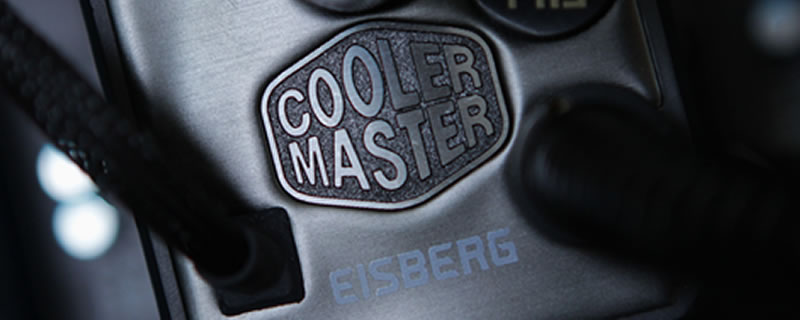Cooler Master Eisberg 240L Prestige Review
Â
Performance and Testing
The test set up consisted of the following
Intel i7 3960X [email protected] 1.1v (undervolted) 4.0GHz @ 1.25v 4.4GHz @ 1.35v 4.6GHz @ 1.45v Gigabyte X79 UD3 Corsair Vengeance LP Memory Corsair HX850 V2 Corsair Force GT 60GB Coolermaster Storm Trooper.Â
As usual we’ll be testing our coolers at varying levels of overclock and increasing levels of voltage. this in turn of course means increasing levels of heat which the coolers need to dissipate. To begin with we start with the undervolted stock speed. Why undervolted? well if you have things set on “Auto”, you may well be using more volts than are actually required to run at the chosen frequency, for example our 3960s will run quite happily at just 1.1volts, solid as a rock, 24/7, and as such we use this as our starting point.
Continuity is very important in testing, and for this reason we keep as many of the potential variables as locked down as possible. We will be using OCCT in Linpack X64, AVX compatible with all logical cores tested and 90% free memory utilised. The test is set up to run automatically with just a few clicks to set it going. A 10 minute idle followed by 30 minutes of testing and a 5 minute cool down is the order of the day and brings the total test time per clock speed to 45 minutes. So as to remove subjectivity in determining whether a CPU has failed, OCCT is set to stop the test and register a fail should the max temp exceed 80 degrees. In testing we noted that if even just one of the cores exceeds 82 degrees OCCT halts the test and a fail is recorded.
Although the Pump also had a 9v speed reducer we have conducted all testing of the pump at the full 12 volts. We have though conducted all tests at 3 fan speeds corresponding to 12v, 7v and 5v, making for a potential 12 tests which at 45 minutes per test makes for a grand total of 9 hours of testing. If you want to run at the lower pump speed, expect a 2-3 Degree increase in temps across the board. As you can see from the chat below, you can expect a 2 degree step in temp as you decrease the fan speed. Even with the fans on their lowest speed the temps are quite reasonable, and comparable to other systems. This is what we’d expect as there’s really not a lot going on at 3.2GHz with just 1.1v trickling through the circuits
 Â
Turning now to the 4GHz test we up the voltage to 1.25 volts, this is what is deemed normally as stock volts. Something we are always harping on about on the forums is AUTO does not mean stock volts, and normally if you overclocking with “auto” volts the motherboard will be upping the volts much more than needed if you were to do it manually. By whichever means it happens, upping the volts (especially from our 1.1v undervolt) does have a big impact on temps, with an average increase of 10-15 degrees seen in the results.
As the Eisberg is essentially a hybrid, falling somewhere between a 240mm rad AIO and a custom system we’ll be comparing it to both. Unfortunately it seems not to be coping too well with the increased voltage the 4.0GHz brings, being about 4 degrees warmer than most 240mm systems. More worryingly it’s actually fallen behind the Noctua NH-D14 which as we all know is a conventional tower type air cooler. Ok, it’s pretty much the best out there but it’s still an air cooler and it costs only half as much as the 240L
Â
Upping the volts still further we achieve a stable 4.4GHz overclock at 1.35 Volts. It’s here we start to separate the wheat from the chaff, with lesser coolers not able to disperse the increased heat effectively. Again we see a jump of 10 degrees or so from the figures at 4GHz. Both the H100 and the well-respected D14 are creeping into the 70s here, indicating that only the cream of the crop will excel at this level.Â
Dropping the fans to their lowest setting saw the gap widen still further, with the Eisberg now lagging some 5 degrees behind the custom kits and 7.5 degrees behind the X60. Again the 240L prestige is bettered by the NH-D14.
Â
We have to admit that we were hopeful the 240L would make it to the 4.6GHz test, although we suspected it would be by the skin of its teeth. Sadly it was not to be, even giving it best of 3 it failed to make it through the test with the temps maxing out after 18 mins and automatically bring the test to an end.Â



